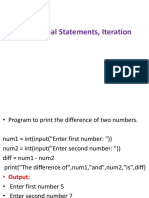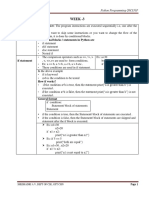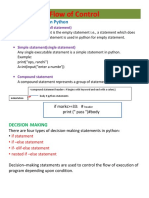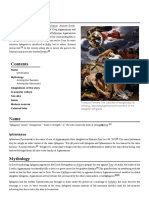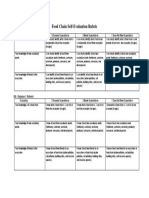0% found this document useful (0 votes)
39 views5 pagesConditional Statement Lab Giude
The document discusses conditional statements in Python including if, else, and elif. It provides examples of using each statement to check conditions and execute code blocks accordingly. The if statement executes code if a condition is true. The else statement executes code if the condition is false. The elif statement allows checking multiple conditions and executing code for the first true condition. Examples include checking number parity, finding the largest of three numbers, and grading test scores.
Uploaded by
Nelajala NelajalaCopyright
© © All Rights Reserved
We take content rights seriously. If you suspect this is your content, claim it here.
Available Formats
Download as DOCX, PDF, TXT or read online on Scribd
0% found this document useful (0 votes)
39 views5 pagesConditional Statement Lab Giude
The document discusses conditional statements in Python including if, else, and elif. It provides examples of using each statement to check conditions and execute code blocks accordingly. The if statement executes code if a condition is true. The else statement executes code if the condition is false. The elif statement allows checking multiple conditions and executing code for the first true condition. Examples include checking number parity, finding the largest of three numbers, and grading test scores.
Uploaded by
Nelajala NelajalaCopyright
© © All Rights Reserved
We take content rights seriously. If you suspect this is your content, claim it here.
Available Formats
Download as DOCX, PDF, TXT or read online on Scribd
/ 5


























